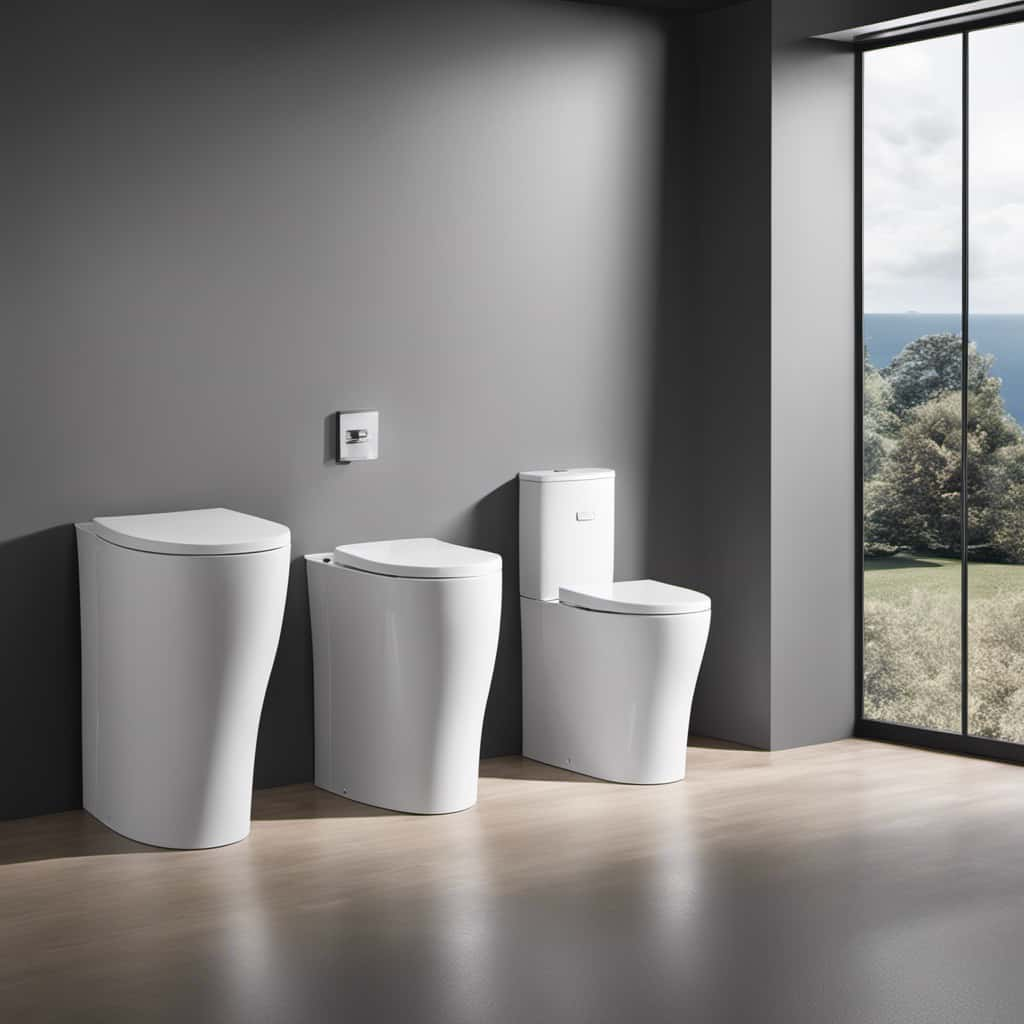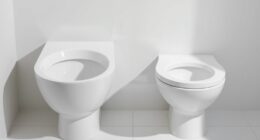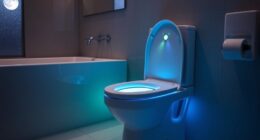I’ve always believed that every small change can make a big difference. That’s why I’m excited to share with you the importance of energy-efficient toilets.
These innovative fixtures not only save water but also play a crucial role in sustainable living. In this article, I’ll provide you with data-driven insights on how energy-efficient toilets can help you reduce your carbon footprint.
Additionally, I’ll guide you on choosing the right toilet for your home and offer installation and maintenance tips for optimal efficiency.
Let’s dive in!
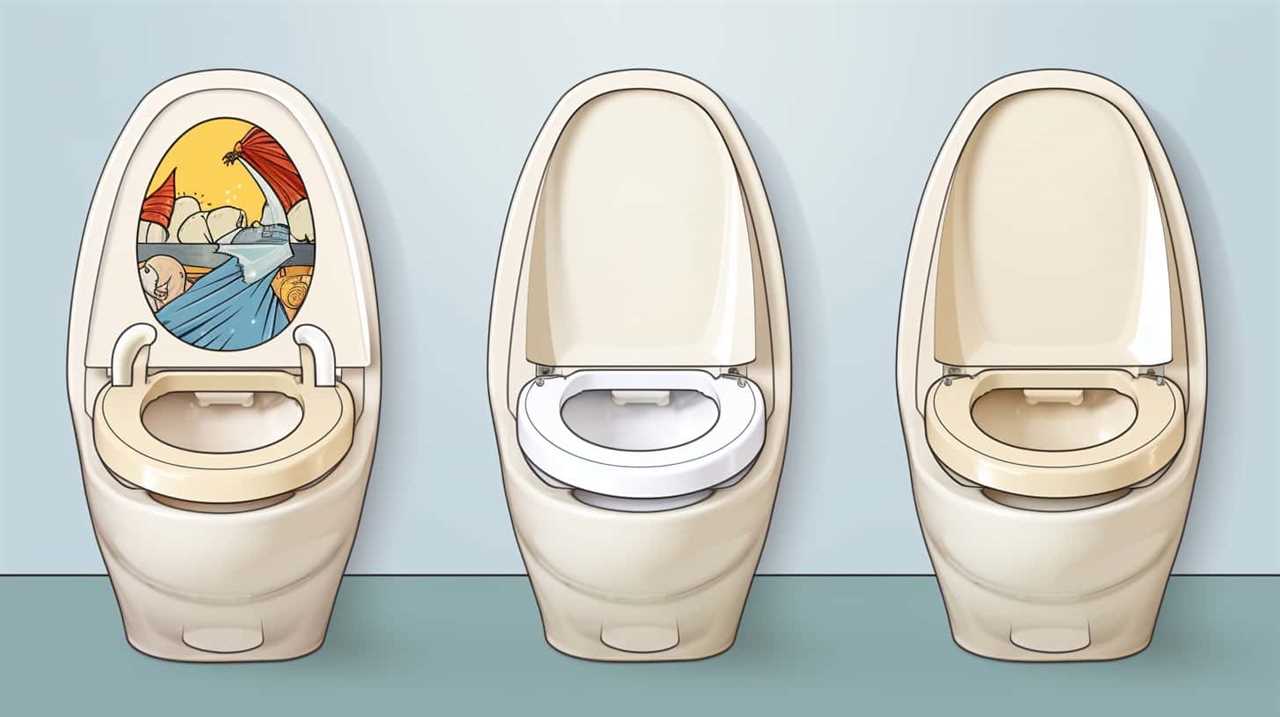
Key Takeaways
- Energy-efficient toilets significantly reduce water consumption
- Energy-efficient toilets offer dual flush options for partial or full flush based on needs
- Installing energy-efficient toilets can earn homeowners rebates and incentives from utility companies
- Upgrading to energy-efficient toilets can increase property value and attract eco-conscious buyers
Importance of Energy-Efficient Toilets
I believe that using energy-efficient toilets is crucial for conserving resources and reducing environmental impact.
Energy-efficient toilets offer a multitude of benefits that contribute to both personal and environmental well-being.
Firstly, these toilets significantly reduce water consumption, helping conserve this precious resource. On average, a traditional toilet uses about 1.6 gallons per flush, while energy-efficient toilets use as little as 1.28 gallons. This reduction in water usage can lead to substantial cost savings on water bills.
Additionally, energy-efficient toilets often come equipped with dual flush options, allowing users to choose between a partial or full flush based on their needs. This feature further enhances water conservation efforts.
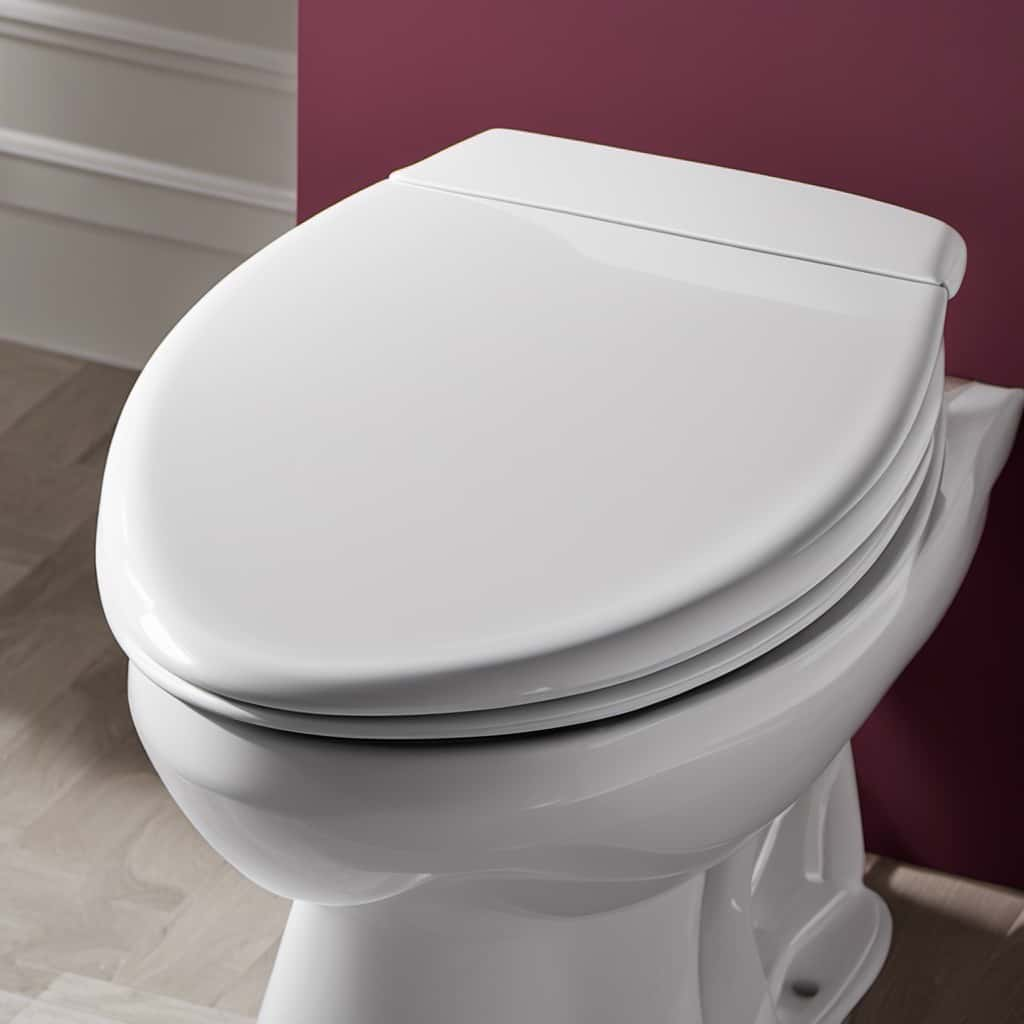
How Energy-Efficient Toilets Save Water
Energy-efficient toilets play a significant role in water conservation by reducing water consumption through their innovative design and features. These toilets utilize water-saving technology to minimize the amount of water used per flush, resulting in substantial water savings.
By incorporating features such as dual-flush mechanisms and low-flow technology, energy-efficient toilets can reduce water consumption by up to 50% compared to traditional toilets. This translates to significant benefits, both environmentally and economically. Not only does it help conserve our precious water resources, but it also lowers water bills for households and businesses.
In fact, studies have shown that replacing old toilets with energy-efficient models can save an average household up to 13,000 gallons of water per year. With such compelling benefits, it’s clear that energy-efficient toilets are an essential component of sustainable water management.
The Role of Energy-Efficient Toilets in Sustainable Living
As an advocate for sustainable living, incorporating energy-efficient toilets into my daily routine has become a regular practice. Traditional toilets have a significant environmental impact, contributing to water scarcity and pollution.

On average, a traditional toilet uses about 1.6 gallons of water per flush, whereas energy-efficient toilets use only around 1.28 gallons or less. This represents a potential water savings of more than 20%.
Additionally, energy-efficient toilets often incorporate innovative design features such as dual-flush mechanisms, which allow users to choose between a full or partial flush depending on their needs. This flexibility further reduces water consumption.
The benefits of energy-efficient toilets extend beyond individual households. Public buildings, such as schools, offices, and shopping centers, can greatly benefit from installing these toilets as they can significantly reduce water usage and contribute to sustainable water management in communities.
Choosing the Right Energy-Efficient Toilet for Your Home
When selecting the ideal energy-efficient toilet for my home, I considered various factors to ensure optimal water conservation and sustainability. One of the key considerations was the toilet design trends that prioritize efficiency and conservation.

Dual flush toilets emerged as the top choice due to their significant water-saving benefits. These toilets feature two flush options: a lower volume flush for liquid waste and a higher volume flush for solid waste. By utilizing the appropriate flush option, dual flush toilets can save up to 68% more water compared to traditional toilets. This translates into significant water and cost savings over time.
Additionally, dual flush toilets are designed to effectively remove waste while minimizing clogs and maintaining hygiene.
Installation and Maintenance Tips for Energy-Efficient Toilets
To ensure optimal performance and longevity of energy-efficient toilets, it’s important to follow proper installation and maintenance practices. Here are some tips to help you get the most out of your energy-efficient toilet:
- Proper installation: Ensure that the toilet is installed correctly according to the manufacturer’s instructions. This includes checking the water supply and sewage connections to prevent leaks and ensure efficient water flow.
- Regular cleaning: Keep the toilet clean by using non-abrasive cleaners to prevent damage to the surface. Regular cleaning also helps maintain the toilet’s efficiency by preventing clogs and build-up.
- Check for leaks: Periodically check for leaks by adding a few drops of food coloring to the tank. If the color appears in the bowl without flushing, there may be a leak that needs to be addressed.
- Maintain the dual flush feature: If you have a dual flush toilet, make sure to use the appropriate flush option for liquid waste and solid waste. This will help conserve water and maximize the toilet’s efficiency.
Frequently Asked Questions
Are Energy-Efficient Toilets More Expensive Than Regular Toilets?
Yes, energy-efficient toilets can be more expensive than regular toilets due to the advanced technology they incorporate. However, the benefits of energy-efficient toilets, such as reduced water consumption and lower utility bills, outweigh the initial cost.

Can Energy-Efficient Toilets Be Installed in Older Homes?
Yes, energy-efficient toilets can be installed in older homes. Retrofitting older homes with these toilets offers benefits in water conservation and cost savings. It’s a practical solution for those seeking to upgrade their plumbing systems.
Do Energy-Efficient Toilets Require Any Special Maintenance?
Energy-efficient toilets, like any other toilets, require regular maintenance to ensure optimal performance. This includes cleaning the bowl and tank, checking for leaks, and replacing any worn-out parts. However, the specific maintenance requirements may vary depending on the brand.
How Do Energy-Efficient Toilets Contribute to Reducing Water Pollution?
Energy-efficient toilets are beneficial in reducing water pollution. They are effective because they use less water per flush, minimizing the amount of wastewater and potentially harmful contaminants that are released into the environment.
Are There Any Government Incentives or Rebates Available for Installing Energy-Efficient Toilets?
Yes, there are government programs that offer incentives and rebates for installing energy-efficient toilets. These programs aim to reduce the environmental impact of water usage and promote sustainable practices.

Conclusion
In conclusion, energy-efficient toilets play a crucial role in promoting sustainability and conserving water.
By choosing the right energy-efficient toilet for your home and following proper installation and maintenance tips, you can significantly reduce your water consumption and contribute to a greener future.
For instance, a case study conducted in a residential community showed that by switching to energy-efficient toilets, they were able to save over 20,000 gallons of water per year, leading to a sense of pride and accomplishment among residents.

